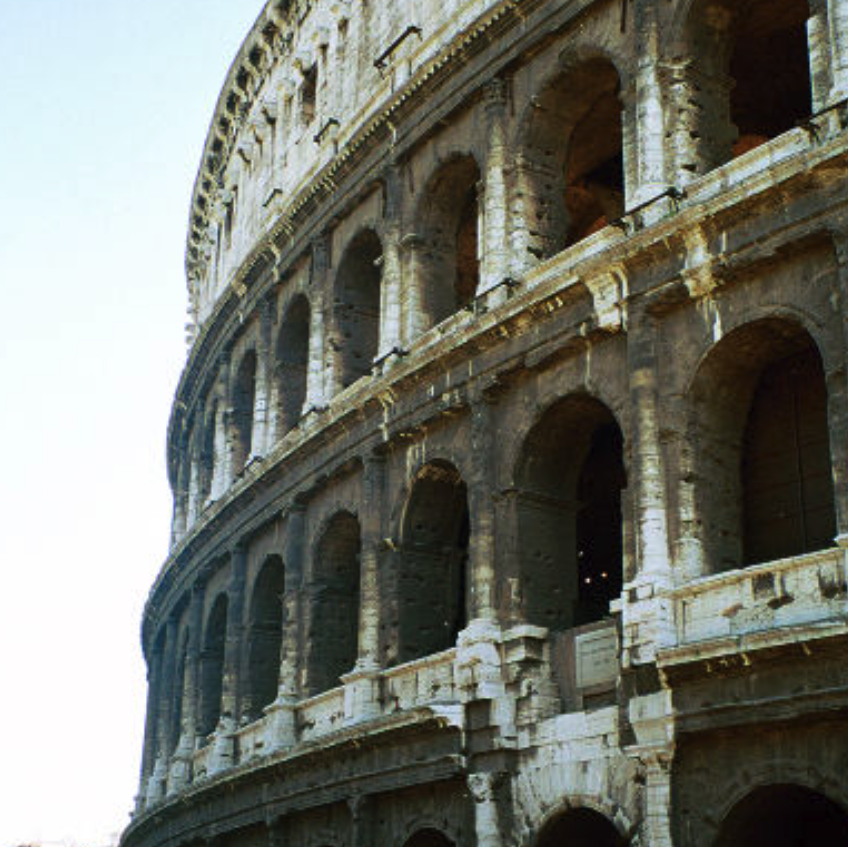By Mark S. Kuhar
According to a new article in Science Advances, in contrast to their modern counterparts, ancient Roman mortars and concretes have remained durable in a variety of climates, seismic zones and even in direct contact with seawater, as in the case for maritime concrete. Because of this proven longevity on the order of millennia, these ancient construction materials are attractive model systems for the design of sustainable, durable cementitious composites for modern engineering applications.

For many centuries, and throughout the entire ancient Roman Empire, architectural elements, such as walls and foundations, and infrastructure systems, including aqueducts, roads and bridges, were created from unreinforced concrete. This concrete was typically composed of volcanic tuff and other coarse aggregates (caementa), and bound by a mortar based on lime and pozzolanic materials such as volcanic ash (pulvis), the detailed formulations of which were tailored to their specific intended applications.
Whereas aerial lime mortars relied on the uptake of CO2 from the air to harden, hydraulic mortars combined lime and water with reactive silicates and aluminosilicates (pozzolanic materials) to form cementitious hydrates [e.g., calcium alumino-silicate hydrates.
This reaction, also known as the pozzolanic reaction, can be written as:
𝑥Ca(OH)2+𝑦Al2O3⋅𝑧SiO2+(𝑛−𝑥)H2O→(CaO)𝑥⋅(SiO2)𝑧⋅(Al2O3)𝑦⋅(H2O)𝑛−𝑥
By developing these hydraulic mortars, the Romans were able to create a stronger, more durable material that allowed them to build larger, more complex-shaped architectural structures for purposes that were not previously possible, including constructions in the sea.
The production process for Roman mortar began with the calcining of lime from a source such as limestone, marble or travertine (all predominantly calcite, CaCO3) to form quicklime [calcium oxide (CaO)]. This lime-based material, which can be hydrated using water (a process known as slaking) or added directly (a process known as hot mixing), was then mixed with volcanic ash, ceramic fragments (cocciopesto) or other pozzolana, sand and water to form the hydraulic mortar.
Regardless of the application, strict specifications for the raw materials were detailed by the ancient scholars Vitruvius and Pliny, especially for the limestone, which was to be pure white, so as to lack impurities. Previous studies on Roman architectural mortars determined that the calcined lime in these samples frequently contained <5 weight % oxides other than CaO. In recent years, detailed investigations of ancient mortars and concretes allowed for the identification of some of the key chemical and mineralogical processes associated with interactions between pozzolanic materials and hydrated lime and provided insights into the mechanical performance of these materials.
Studies focusing on the durability of Roman concrete constructed in marine environments, for example, evidenced the dissolution of lime and vitric tuff clasts at high pH, followed by the precipitation of C-A-S-H–containing reaction rims and, subsequently, the post-setting crystallization of Al-tobermorite and phillipsite in the matrix.
In both Augustan and Imperial era architectural concretes, a similar C-A-S-H precipitation and subsequent crystallization and growth of platy strätlingite crystals in the perimeters of scoriae and the cementing matrix were observed. More recently, both Al-tobermorite and strätlingite crystals were found in the mortars of the Augustan period (ca. 30 BCE) tomb of Caecilia Metella. The prolonged reactivity of volcanic aggregates and their potential role in the long-term durability of these materials has thus been an ongoing focus of recent studies on Roman concretes.
To read the entire scientific study, go to www.science.org/doi/10.1126/sciadv.add1602.
